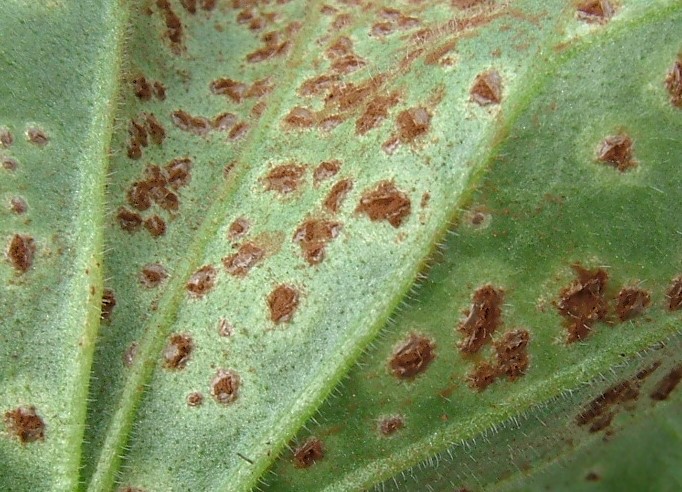Please click here to access the main AHDB website and other sectors.
- Home
- Knowledge library
- Control of rust diseases on protected ornamentals
Control of rust diseases on protected ornamentals
Follow the guidance on these pages to achieve effective control of rust diseases on protected ornamental crops.
Find out how to control rust diseases
Rust diseases affect several popular species of bedding plants, including antirrhinum, bellis, cineraria, dianthus, fuchsia, pelargonium and sweet william, and pot plants such as campanula, chrysanthemum and pot roses. Disease impact varies, but crop losses of 2–5% are not uncommon and total loss is possible if outbreaks are left untreated with some crops like bellis.
Control of rust diseases on protected ornamental crops is challenging for several reasons:
- The diseases are often not noticed until the infection is advanced, when sporulation is easily seen
- Fungicides for the control of rusts with approval for use on ornamental crops are very limited
- The efficacy of a fungicide can differ between rust species
Some years will be worse than others for outbreaks of rust diseases depending on environmental and weather conditions.
On these pages, we’ll cover the factors to help understand and control rust infections on bedding and pot plants, including:
- Symptoms, mechanisms of spread and pathogen life cycles
- Cultural control
- Chemical control
- Fungicide resistance management
- Crop safety/phytotoxicity
Select from the pages below for more information.
Action points
- Control weeds, such as willowherb and groundsel, in and around the glasshouse as these can act as alternate hosts for rusts
- Inspect and monitor newly delivered young plants for evidence of rust diseases. If facilities exist, keep new plants of susceptible species in quarantine for a week, and reject diseased batches of plants
- Manage watering to minimise periods of leaf wetness and reduce humidity via ventilation and air circulation
- Dispose of severely affected plants, taking care not to spread spores around the glasshouse
- Apply fungicide treatments as soon as the diseases occur, using products from at least two different modes of action groups
Symptoms and mechanisms of spread and the life cycle of rust pathogens
Knowledge of the sources of rust infections, pathogen life cycles and the optimal conditions for infection, along with disease symptoms, are key to avoiding disease outbreaks and limiting crop losses.
Find out more about the symptoms and biology of rusts
Cultural and chemical control strategies
A combination of cultural control measures, crop monitoring and targeted use of fungicides will provide the best strategy for minimising disease incidence and severity.
Read how to control rust diseases on protected ornamentals
Useful links
Crop Walkers’ Guide: Bedding & Pot Plants
Webpage content correct as of March 2021.
Author(s) – Dave Kaye and Erika Wedgwood, ADAS Horticulture.
Original author(s) – Tim O’Neill and John Scrace, ADAS Horticulture.
Pelargonium rust – cinnamon-brown pustules on the lower leaf surface

Image © AHDB

